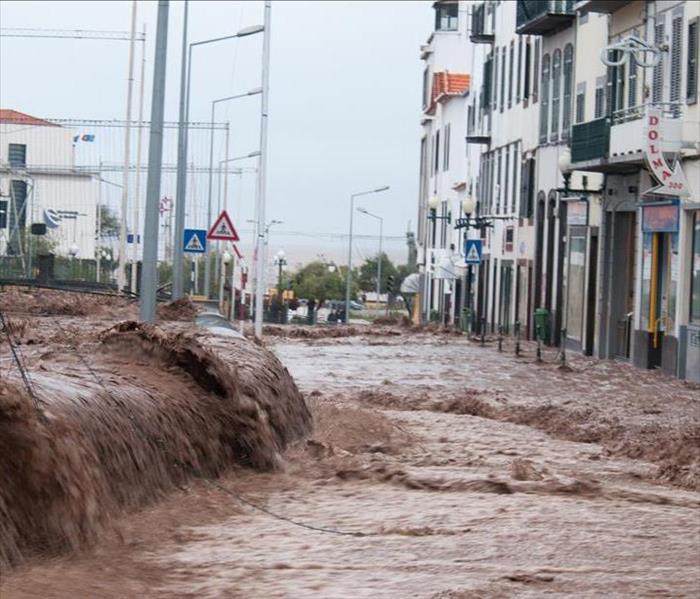The Different Types of Floods
8/4/2016 (Permalink)
Floods are the most common natural disasters and cause billions of dollars’ worth of damage every year. Even if you don’t live in a high-risk flood zone, there is still a chance that flooding can affect your property. Below you can read more about different flood categories to help you understand your own risk:
1. Flash floods occur when heavy rainfall causes a fast rise of rapid-moving water that sweeps everything in its path. They usually cover a relatively small area and occur with little to no notice, generally less than 6 hours. The rapid water torrents can move large objects, such as cars, rocks and trees.
2. Coastal floods are caused by strong winds or storms that move towards a coast during high tide. When powerful waves breach the coast’s dune or dike, the area will be flooded. Coastal areas with fewer defenses and lower elevation are the most affected. The best time to repair the breach is during low tide.
3. River floods are characterized by gradual riverbank overflows caused by extensive rainfall over an extended period of time. The areas covered by river floods depend on the size of the river and the amount of rainfall. River floods rarely result in loss of lives but can cause immense economic damage.
4. Urban floods occur when the drainage system in a city or town fails to absorb the water from heavy rain. The lack of natural drainage in an urban area can also contribute to flooding. Water flows out into the street, making driving through it very dangerous. Although water levels can be just a few inches deep, urban floods can cause significant structural damage.
5. Pluvial floods form in flat areas where the terrain can’t absorb the rainwater, causing puddles and ponds to appear. Pluvial flooding is like urban flooding, only that it occurs mostly in rural areas. The agricultural activities and properties in areas where pluvial floods have occurred can be seriously affected.
To learn how to prevent flooding in your basement, take a look at these tips. If your basement has flooded, learn what to do here. For professional fire, water and mold restoration services, contact your local SERVPRO office.
CALL SERVPRO… We are water damage restoration specialists and are ready to restore your Redding home back to pre-water damage condition. We quickly extract the water and then dry your property using state-of-the-art equipment. SERVPRO of North Shasta, Trinity & Greater Tehama Counties uses moisture monitoring equipment to effectively measure and document the drying process to ensure your property is dry.
Please refer to our Water Damage Tips—Until Help Arrives Guide and follow these tips to protect yourself and your property.
Need Water Damage or Flood Cleanup Services?
Call Us Today – (530) 222-0200





 24/7 Emergency Service
24/7 Emergency Service
